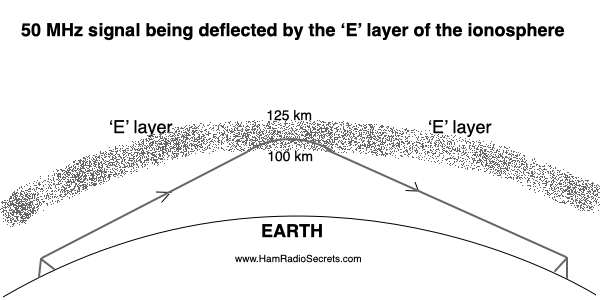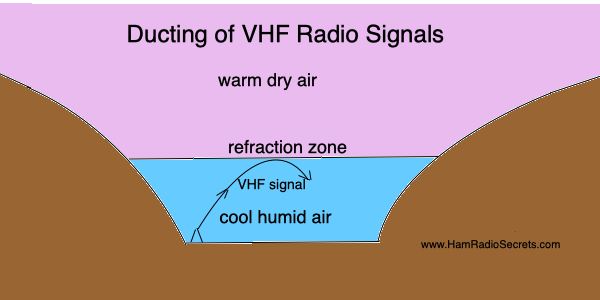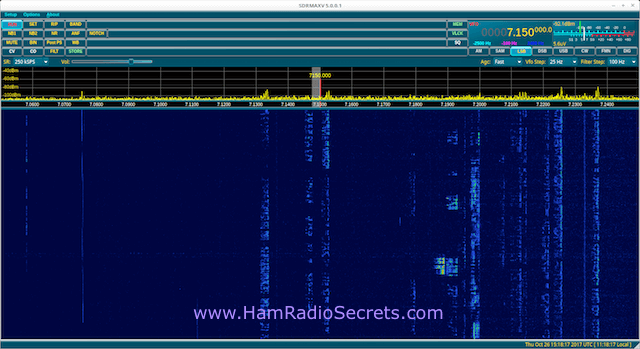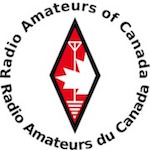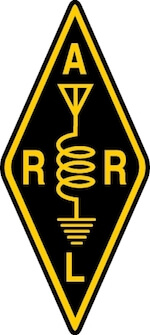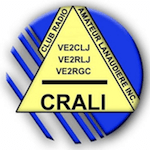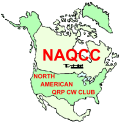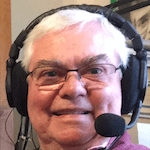6 Meter Ham Band Activity and the Propagation Modes Driving It
The most popular way of getting information on 6 meter ham band activity is by monitoring DX clusters. But that's not the only way!
Besides monitoring six-meter activity, looking for 6 meter band openings, the second purpose of this article is to help you understand how each different propagation mode helps your 50 MHz signal along. With this knowledge, you will eventually be able to anticipate favorable conditions!
But, first, let's have a look at the resources that you can tap to see what's going on on six.
6 Meter Ham Band Activity Web Resources
6 Meter DX Map by EA6VQ
(https://www.dxmaps.com/spots/mapg.php?Frec=50)
In my view, this is probably the best 50 MHz propagation map on the Web. It immediately shows what the possibilities are of contacting other ham radio operators on six meters.
The map is available here: https://www.dxmaps.com/spots/mapg.php?Frec=50
Quoting from the website: "Its aim is to provide a detailed but comprehensive view of the propagation conditions in real time".
- I strongly recommend reading the user manual. It's an indispensable tutorial to enable you to get the most out of this sophisticated resource.
- I also strongly recommend reading the online FAQ page. It's comprehensive and very informative!
You can extract an amazing amount of useful information on 6 meter ham band activity from the map. It's extensively configurable. You can make it display only you want to know.
Here are two of the countless useful features:
- -The links between QSO contacts are color-coded so that you can immediately see which propagation mode was contributing to the establishment of any given QSO.
- The call signs are also color coded to show which communication mode was involved in the QSO being shown on the map.
Almost addictive!
The UKSMG Map of 50 MHz activity spotted in the last hour (http://uksmg.org/dxcluster/NewMap/index.php) is somewhat similar. It also displays color coded lines that identify the propagation mode in action for any given QSO, when it is reported, of course. The spot data for that map is provided by GB7DJK.
The Weak Signal Propagation Reporter Network (WSPR)
Another way of finding out about 6 meter band conditions is to use a map of WSPR signals reported. (http://wsprnet.org/drupal/wsprnet/map).
For those of you who might not be familiar with WSPR, please visit: http://physics.princeton.edu/pulsar/k1jt/wspr.html
To display the 6 meter ham band activity on the map you must set a minimum of parameters (located below the map):
- Set the band to 6m (I think the default is 30m)
- Set desired time period (default is 1 hour)
- Day/Night overlay (check the box if you want to display it)
- Go back to just below the map and click 'Update'.
Note that the map uses a Google service for development purposes only... which might be taken down, or become a paid subscription service anytime.
If you see "For development purposes only" stamped in light gray all over the map, then the Google services map display, it depends on , may be living on borrowed time. Meanwhile, enjoy it while it’s available.
50 MHz DX Clusters
UKSMG 50MHz DX Cluster - Latest Spots
http://uksmg.org/dxcluster.php
This page of information lets you look at all the latest spots, worldwide or you can choose to filter them by continent only. The comments column will usually give information on the mode used in the QSO. You will often notice a large number of digital mode (FT8) reported on 50.313.0 MHz!
RSGB Live DX Cluster Powered by Dxlite from G7VJR (https://rsgb.org/main/operating/dx-cluster/) is somewhat similar but without the possibility of filtering the data by continent.
BEACONS
One of the best, nearly passive ways of monitoring 6 meter ham band activity in real time is to listen for beacons of the 50.000 MHz to 50.499 MHz band of frequencies (52.342 to 52.490 in Australia and New Zealand).
When you hear one or more of the many 50 MHz beacons, it provides an early warning of favorable propagation conditions between you and the location of the beacon.
I just set my IC-7300 to continuously scan for CW signals between 50.000 MHz and 50.500 MHz until it pauses on a CW signal. When it does, the squelch opens and I can stop the scan to listen. If it's a beacon, I can get its call sign and I then look it up in G3USF's list for more information on its:
- location
- grid square
- transmitting power
- type of antenna
- radiation pattern (omnidirectional or directional)
G3USF's Worldwide List of 50MHz Beacons (https://rsgb.org/main/operating/dx-cluster/) - is compiled and regularly updated by Martin Harrison, G3USF, for the Propagation Studies Committee of the Radio Society of Great Britain.
- Cluster information (maps & lists), WSPR reports and 6 meter beacons, together, will give you a complete picture, in real time, of 6 meter ham band activity.
- Your knowledge of the various 6 meter propagation modes will help you anticipate favorable propagation conditions.
The Propagation Modes
Behind 6 Meter Ham Band Activity
VHF (50 MHz and 144 MHz) radio signals can travel way beyond the horizon thanks to various propagation modes. Some are well known while others are not. We will name them and briefly describe them in a moment.
Fans of the six meter (50 MHz) frequency band dub it the "magic band". It can often be frustratingly inactive, but it can also suddenly become alive, usually for a short time, causing an intense flurry of activity... before quietly going to sleep again.
During such "magical" moments, I would compare the sudden furious 6 meter ham band activity to a bank of piranhas rushing on a duck that had the unfortunate idea of landing on the surface of a calm-looking river. The 50 MHz frequency band can then suddenly start to boil over with activity for a few minutes (rarely a few hours).
It's both fascinating and mind-boggling to witness such an event, not to mention the adrenaline rush that galvanizes us into action, in an attempt to complete as many QSOs as possible during these brief moments!
The Layer 'E' of the Ionosphere
More often than not, the propagation of 50 MHz radio waves will depend on the ionized layer 'E' of the ionosphere, which is about 20 km thick and its base is about 100 km above ground level.
The 'E' layer is present mainly during the day, from dawn to dusk, and is responsible for most of the 6 meter ham band activity.
The 50 MHz signals, reaching the 'E' layer with a small angle of incidence, will be deflected back towards the ground and will thus reach great distances from their point of origin.
Like the other ionized layers in the ionosphere, the ionization intensity depends entirely on the level of activity of the sun during the solar cycle.
Sporadic 'E' (Es) Events
In addition, during summer daytime, in mid-latitudes, mainly from May to July, stealthy "densely ionized" clouds appear briefly in the 'E' layer, usually for a few tens of minutes. That's what is called sporadic propagation 'E' ('Es'). This phenomenon can sometimes occur at night too!
Little is known about the causes behind the formation of these "clouds" of intense ionization. There are many theories, but ... the important thing is that they appear without warning and that we can take advantage of them.
Our ability to catch Es events depends on a close monitoring of 6 meter ham band activity. My favorite way is to listen to my IC-7300 as it scans the lower 500 kHz of the six-meter band, while I do something else in the shack or on the workbench.
During the May-July summer period, when these sporadic 'E' events usually occur, it is possible to establish contacts over distances varying from 600 km to 2300 km, even at low power with simple (horizontally polarized) antennas. However, it's best to use the CW mode or a digital mode like FT8 with Es propagation because deep QSB is often in play!
The Auroras
Auroras (northern lights or aurora borealis in the northern hemisphere - aurora australis in the southern hemisphere) can sometimes contribute to VHF radio propagation and 6 meter ham band activity.
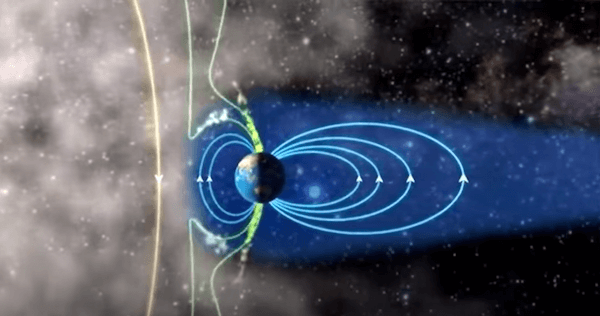 Solar wind hits earth's magnetospere producing an aurora.
Solar wind hits earth's magnetospere producing an aurora.(Source: https://www.youtube.com/watch?v=ziRKy6rNpR8)
Here is a detailed description of the creation of the northern lights on YouTube.
When...
- strong nuclear eruptions occur on the surface of the sun,
- they project an intense "solar wind" which invades the solar system,
- and collides with our magnetosphere,
- thus causing a geomagnetic disturbance,
- which produces the northern lights.
It is then possible to bounce our 50 MHz signals off them, which allows us to communicate with radio amateurs over distances comparable to those obtained via the sporadic 'E' layer, especially in the Nordic countries. Auroras also contribute some additional 6 meter ham band activity, at times.
However, only Morse code (CW) or digital modes (such as FT8 and others) are viable under these conditions, because the voice modes of transmission (SSB, AM and FM) are strongly scrambled and rendered unintelligible by geomagnetic disturbance.
Meteor Showers
Meteor showers can also be used to extend the reach of 50 MHz signals and, thus, contribute additional 6 meter ham band activity.
One of the popular activities of 6-meter enthusiasts is to bounce signals off the densest ionized trails produced by more than a dozen known meteor showers, such as the Perseids. This activity is usually called “6 meter meteor scatter”.
The Perseids, Orionids, Leonids and the others are predictable. This allows us ample time to prepare to take advantage of them. For more details on this subject, visit this page of information by the American Meteor Society.
Tropospheric Propagation
The troposphere is the lower part of the Earth's atmosphere. It rests on the surface of the earth. It is in the troposphere that meteorological phenomena appear. Some of them favor VHF radio propagation of 50 MHz and 144 MHz frequencies over long distances.
Tropospheric Ducting or Channeling
The meteorological phenomenon which contributes to the propagation of 50 MHz and other VHF radio waves - hence occasionally contributing to 6 meter ham band activity - is the simultaneous inversion of temperature and humidity in the lower levels of the troposphere.
It manifests itself especially in the valleys and produces a channeling effect close to the ground ... which traps the VHF signals in a "tunnel" of a few hundred meters in height, wedged at the bottom of the valley and bordered by its walls.
Normally, the temperature in the troposphere decreases with altitude. However, when the lower troposphere is very stable, and the sky is cloudless, it sometimes happens...
- at night,
- in July and August (sometimes into September),
- that the cold air, located above a valley,
- slides down to the bottom of the valley,
- and slips under the warmer air, lifting it up.
This results in a temperature inversion: cold temperatures under warmer temperatures.
The border (transition zone) - between warm drier air resting on cool more humid air at the bottom of a valley - acts as a refraction zone and prevents signals from escaping out of the valley.
Such an inversion forms a "conduit", at the bottom of the valley, which traps the VHF signals and forces them to travel along a "corridor" also called "duct" or "tunnel".
This "duct" will form a few hours after sunset and will dissipate shortly after dawn, under the action of the sun. This thermal "conduit" will be at its most effective an hour or two before dawn.
The VHF signals which are emitted within this "conduit" can reach hundreds of kilometers, as long as the "conduit" remains intact, thus contributing additional 6 meter ham band activity.
An Example:
In Québec, the city of Montréal is located in the St. Lawrence River valley. This valley originates in the lower Great Lakes of Ontario and Erie, located to the southwest.
I was sometimes able to successfully communicate, in SSB and CW, with about 20 watts on 50 MHz, from Montréal, Quebec, late on a clear night in August, with ham radio operators located on the western shores of Lake Ontario, some 600 km upstream... and my antenna was a simple folded dipole oriented north-south, up at 30 feet, therefore radiating broadside toward the west and east.
That's what tropospheric "ducting" can do for night owls like me!
Tropospheric Ducting Forecast
Fortunately, William R. Hepburn has developed a method of forecasting tropospheric ducting for up to 6 days ahead. It is a very good and 'unique' VHF tropospheric propagation prediction tool. The Hepburn Tropo Index (HTI) forecast is available for most regions of the globe.
You can select the region you want a tropo forecast for by using the drop down menu labelled "Select Region...", located in the top left corner of the page located at: http://www.dxinfocentre.com/tropo.html .
The Hepburn Tropo Index (HTI) is explained in detail here: http://www.dxinfocentre.com/propagation/hti.htm (use text only)
Finally, you will find an excellent explanation of the various tropospheric propagation modes here: http://www.dxinfocentre.com/propagation/tr-modes.htm
Warm Front Refraction
Another 50 MHz propagation zone can form ahead of a warm front.
The imminent arrival of a warm front will sometimes, under certain conditions, offer an opportunity for a temperature inversion in the lower levels of the atmosphere, which will be favorable to tropospheric VHF propagation... and more 6 meter ham band activity.
A temperature and humidity inversion will sometimes be sufficiently well defined, a few hours before the arrival of a warm front, mostly...
- at night,
- in spring and fall,
- under cloudless skies,
- when relatively warm and dry air,
- overcomes relatively cooler, more humid air.
Ham radio operators who are then located in the 50 MHz radio wave propagation zone (VHF) located in relatively colder moist air - position represented by the capital letter 'A' in the cold air below the frontal zone - just under and along the warm front (transition zone between cold air and hot air)...
... will be able to take advantage of the refraction action of the frontal transition zone which will prevent the VHF signals from escaping into space and, thus, will guide them along for hundreds of kilometers along under the frontal zone.
50 MHz Antennas
There are antennas for all tastes and budgets. From the humble dipole to an array of several yagis, arranged to be fed in phase, there will be an antenna which will suit the expectations and means of each radio amateur who wants to take part in 6 meter ham band activity.
In fact, many QRP (less than 5 watts of RF power) communication enthusiasts use a simple dipole antenna! For 50 MHz, I suggest a folded dipole, fed with efficient ladder line. It costs very little to build and it's very effective, in spite of its simplicity. See this page on my website for a detailed description.
Even with such simple 50 MHz antennas and low power, 6 meter ham radio operators manage to establish contacts over astonishing hundreds, sometimes thousands of kilometers in CW ... even more in digital modes such as FT8.
I would like to emphasize a point about transmission lines that I consider extremely important.
Whichever antenna you choose to use, remember that the attenuation of the signals at 50 MHz of coaxial cable RG8-U is 11.5 times greater (9-11 times for the RG-8X) than the attenuation at 50 MHz of a "ladder line" transmission line (400-450 ohms)! I can't bear the idea of wasting so much RF energy in a coaxial cable transmission line unnecessarily. I'll let you think about that.
Frequencies and Modes for DX on the 6 Meter Band (50 MHz)
Fans of the six-meter band, using CW, digital modes and SSB, are generally found in the lower 300 kHz of the band. Here is where you will find the 50 MHz frequency band plans for each region of the globe.
Region 1 (Europe)
https://www.iaru-r1.org/wp-content/uploads/2020/03/VHF-Bandplan.pdf
Region 2 (the Americas)
https://www.iaru.org/wp-content/uploads/2020/01/R2-Band-Plan-2016.pdf
Region 3 (Asia and Oceania)
https://www.iaru.org/wp-content/uploads/2020/01/R3-004-IARU-Region-3-Bandplan-rev.2.pdf
Full details on the use of the radio spectrum by radio amateurs around the world can be obtained from the International Amateur Radio Union (IARU) website.
I hope this very brief summary of the factors that can enhance the propagation of 50 MHz and other VHF frequencies has helped.
Armed with the information above, I'm confident that you will be able to successfully contribute to the 6 meter ham band activity.
73 from VE2DPE
73 de VE2DPE
Claude Jollet
7, Rue de la Rive, Notre-Dame-des-Prairies, Québec, Canada J6E 1M9
QTH Locator: FN36gb
Disclosure
If
you make a purchase via a link on this site, I may receive a small
commission on the transaction, at no extra cost to you. Thank you!


(One word queries work best)
FOUND THIS
SITE
USEFUL?
VE2DPE
Is a member
in good standing
of
Also a proud member of an international community of solopreneurs
using SoloBuildIt!
(SBI!)
to promote my self-published eBooks
since 2005.
See my review
of this unique product for online businesses.
CQ CQ CQ
If you have a question, a comment or a topic you would like me to cover, please do not hesitate to ask here.
